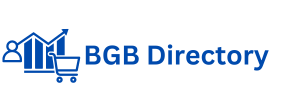Lead generation is one of the most successful ways to grow a business.
At a time when traditional marketing methods fail to attract the desired customers and make a business stand out from the competition. The lead generation marketing process offers the ideal solution.
If you are wondering what this term means and how it can make your business take off. Keep reading and all your questions will be answered!
What is Lead Generation?
Lead generation is the process of generating customer interest in a product or service, with the aim of converting that interest into a sale.
The process that a company follows to get in touch with these users and convert them into customers is none other than the so-called lead generation. The way to achieve this may involve arousing their interest, through attractive promotion of the product he wishes to sell, and usually involves the personal information provided by random visitors, by filling out some online interest form.
The purpose of lead generation is to create in the visitor the need to acquire a product or cultivate the desire to buy it , using different techniques. Some typical examples of lead generation mechanisms are discounts, offers, blog posts and free trials of services with a limited duration.
By using the above tactics, a business can consensually collect visitors’ personal information as well as gain access to their personal preferences. The above information is absolutely important for marketing as it can influence the buying process of consumers and convert simple one-page visitors into loyal customers.
Lead generation is at the core of many B2B companies’ marketing strategy, as their products may cost too much and are less likely to be purchased directly by people visiting their website. Instead, collecting new leads allows the business to educate this audience and nurture prospects, primarily through email marketing, before approaching them directly through their sales team.
Another industry that benefits from the usefulness of lead generation is e-commerce, as email marketing remains one of the most effective channels of online marketing. At the same time, collecting a prospect’s contact information allows the business to reach out to him later, even if he doesn’t make a purchase right away.
How does Lead Generation work?
The process of lead generation includes two main components: getting traffic to a website and persuading visitors to share their personal information with that page.
A first step in the process is to find an effective way to drive potential customers to a business website. Depending on the goals and budget of the business, the ways of attracting the above perspective vary.
Some of the best known and most important marketing techniques for this purpose are:
When visitors arrive at the site, the next step is to convert them into leads, via an online form. This can be achieved in many ways but includes getting users interested in a product or service and persuading them to leave their personal contact information.
Marketing strategies for generating leads
Some common marketing strategies that businesses use to generate leads are:
- The content: Creating and making available germany telegram data on a consistent basis that offers solutions to readers’ pain points by speaking directly to their souls and minds is a constant tactic that companies apply to induce lead generation.
- Webinars: These are live video sessions that visitors can watch or participate in. Because webinars are time-consuming and interactive, they’re a fantastic way to not only generate leads, but educate visitors to help guide them through the conversion process.
- Landing pages: The best lead generation tool is the product itself. So if a business has an attractive product, visitors will be willing to submit their personal information even without additional incentives. Landing is the key to maximum lead generating of a website.
- Email: It is the easiest way for a business to reach those who already know the product or service it offers and who have consciously consented to subscribe to .
- Blog: The strength of blog posts is that the creator can shape the content so that it meets exactly the purpose he wants to achieve.
Additional elements of a lead generation strategy
Other elements that an effective lead generation strategy should include are:
- Audience research and analysis – This will identify the target audience that interests the business and gather the necessary information that will lead to more effective and targeted advertisements.
- The right ratio of advertising on social media networks and Google – The combined use of both media plays a huge role as it will be possible to grow traffic both on the website and on the profiles of a business on the various social networking platforms.
- The how ai is revolutionizing marketing and customer performance: a look back at the salesforce world tour 2024 should have the necessary tracking mechanisms (Facebook pixel, LinkedIn insight tag, Google remarketing, etc.) so that the users who show the most interest can be retargeted.
- Existence of the necessary popups/slide-ins – Another element that falls under landing page optimization, which will help so asia email list that when a user attempts to leave a page, without completing the desired elements, an exit intent popup will induce her to reconsider his/her departure. As the number of moves required to close a page increases, so do the chances that the visitor will eventually fill out the form.


